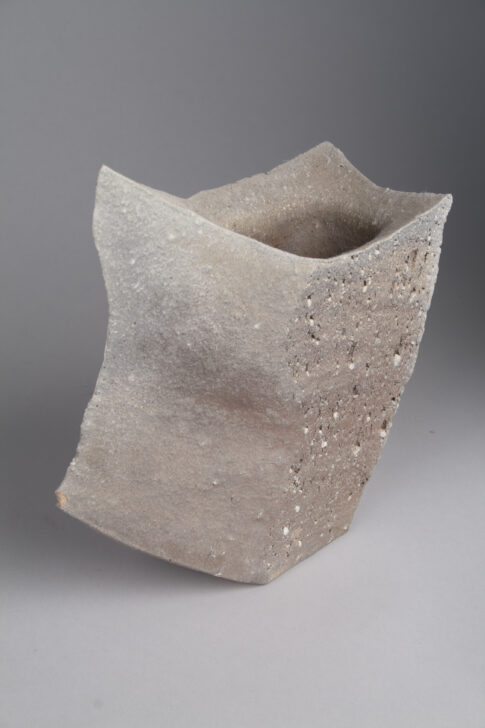Kaze (Wind)
Kôyama Yasuhisa

Description
This remarkable ware is by one of most active potters working in the historic kiln town Shigaraki. The pottery traditions of these towns are similar in technique and aesthetics, such as the use of local, earth-toned clay and the rejection of glazing in favor of the unpredictable surface effects of heat and natural ash created during firing. In the Momoyama (1573–1615) and early Edo (1615–1868) periods, the simple and rustic aesthetic of Shigaraki and Bizen wares were highly regarded by tea
ceremony practitioners. Kohyama creates bold, sculptural works that are based on intensive study of historic wares from these periods. Kohyama’s Wind was made using piano wires to cut sharp angles. The shiny surface is the result of natural ash, which floats and attaches to the clay body of the vessel when it is fired in a single-chamber, wood-fired kiln. This piece is one of many works of the same title, said to be inspired by the harsh landscape of Utah, Arizona, and New Mexico that Kohyama saw in the 1990s.
Subject Matter:
Kohyama’s Wind was made using piano wires to cut sharp angles. The shiny
surface is the result of natural ash, which floats and attaches to the clay
body of the vessel when it is fired in a single-chamber, wood-fired kiln. This
piece is one of many works of the same title, said to be inspired by the harsh
landscape of Utah, Arizona, and New Mexico that Kohyama saw in the 1990s.
Physical Description:
A standing vessel with four sides, two of them meeting to a sharp point on the one side. The bottom is square in shape and the upper portion of the vessel curve up.
Usage Rights:
If you are interested in using an image for a publication, please visit https://umma.umich.edu/request-image/ for more information and to fill out the online Image Rights and Reproductions Request Form.